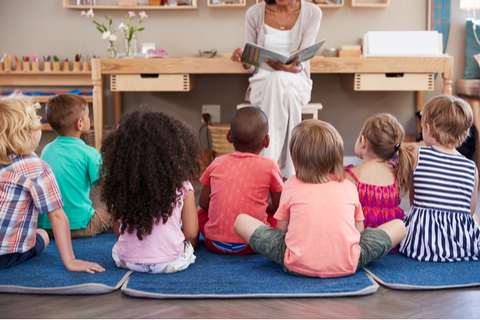Teaching Through Stories — Tuggles Tales
Blog · Oct 07, 2020

The Mendez Foundation is proud to announce the release of a new series of original storybooks for young readers and emerging readers! Available in early 2021, Tuggles and his pals take young learners on a journey exploring prosocial skills through fun adventures and relatable experiences. For centuries, storytelling has been an effective way to communicate knowledge and information. When content is embedded in the context of a story, learners begin to see themselves in the story and identify with the characters. Stories also are a great way to engage multiple learning modalities like visual and auditory learning. The Tuggles Tales series is a compilation of stories designed to delight and entertain young readers, as well as reinforce key concepts taught in the Too Good programs. This week, we’ll explore the books in the Tuggles Tales series and the value in incorporating storytelling into teaching.
Good stories create a sense of connection and reinforce positive norms. When we reinforce positive norms, we instill a sense of autonomy in the child, foster a sense of belonging in the community, and promote hope for the future.
Teaching Through Stories
In any given group, approximately 40 percent of learners will be predominantly visual learners and another 40 percent will be auditory learners, learning best through lectures and discussions. The remaining 20 percent are likely to be kinesthetic learners, who learn best by doing, feeling, and experiencing. Storytelling as a content delivery mode engages all three of these learning modalities. Visual learners appreciate that storytelling evokes mental pictures and they respond positively to illustrations. Auditory learners focus on the words and the voice of the storyteller, drawing connections to a story’s meaning. Kinesthetic learners recall emotional connections from the story. Stories may also create vivid mental images, which is a cue for recalling information. Each type of learner can connect to the content in a way that suits their inherent ability to consume and recall information. When content is delivered in a story, students are more likely to remember and feel connected to that content.
Good stories create a sense of connection and reinforce positive norms. When we reinforce positive norms, we instill a sense of autonomy in the child, foster a sense of belonging in the community, and promote hope for the future. Stories featuring familiar characters build trust and allow the listener to enter the story where they are, opening them up to learning. Because stories provide natural connections between events and concepts, when students are reminded of one part of the story, they can often evoke the other parts of the story, as well. Stories allow students to put themselves in other people’s shoes and practice empathy.
Students can relate to the familiar trip, and can connect the story to important concepts taught in the Too Good program
The Tuggles Tales Series

The Tuggles Tales series of original storybooks addresses important skills needed to develop resiliency in students. In Tuggles Catches a Feeling, Tuggles goes on a fishing adventure with his grandpa. The day includes a range of relatable events which provide an opportunity for Tuggles to identify the emotions he feels throughout the long day on the docks.
When Tuggles is pressured and taunted by a group of friends to engage in unsafe behavior in Tuggles has a Better Idea, he resists peer pressure and offers a better idea for safe playground fun in this memorable rhyming tale. By confidently refusing to participate in unsafe activities and providing a sensible alternative, Tuggles convinces his friends they can have more fun while staying out of trouble.
In Tuggles Goes to the Doctor, Tuggles wakes up feeling ill. When readers join him on a trip to the doctor’s office, a nurse explains that Tuggles’ weight and height are important information for the doctor to be able to prescribe the correct dosage of medicine. Students can relate to the familiar trip, and can connect the story to important concepts taught in the Too Good program about the safe use of medicines.
Tuggles uses the “Stop and Think” decision making model to solve his problem in Tuggles Stops to Think. When his ball bounces out of the yard, Tuggles considers the potential consequences of each way he could retrieve the ball. As he considers his options, Tuggles realizes that by stopping to think, he can avoid danger and get back to playing ball with his friend Rose safely.
Tuggles effectively identifies and manages a building sense of frustration when he encounters an obstacle one morning in Tuggles Keeps His Cool. Tuggles takes steps to calm himself down and realizes that he makes better decisions when he slows down to identify and manage his emotion. Tuggles is able to enjoy his favorite train made of cardboard boxes after he calms himself down.
The Tuggles Tales stories provide a fun and memorable experience for students, while reinforcing resiliency building skills and positive norms, and effectively engaging students of a variety of learning modalities. The Tuggles Tales series of original storybooks ignite imaginations and will make a delightful edition to your school library or home bookshelf.